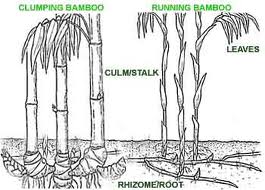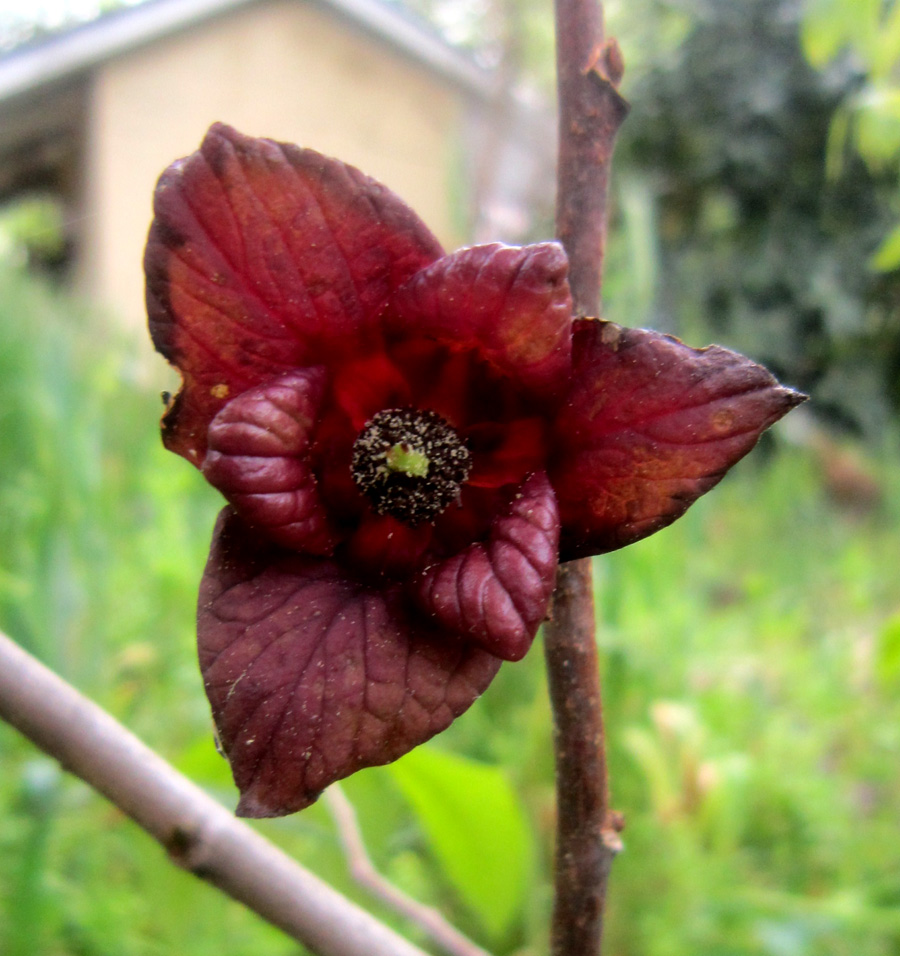Way down yonder in the paw paw patch…
It made my morning to discover that our paw paw tree had flowered. The flowers are an astonishingly-pretty deep red with a hint of purple. We planted this tree a few years ago, but this is the first time it’s flowered, which means it should fruit sometime over the late summer.
I’ll be honest with you: I’ve never eaten a paw paw before, but I’m told they taste like mangos. They live in shady areas along streams and river basins in much of the Eastern U.S. When we planted this tree, we thought the back of the yard was wet and shady enough, and would be a nice addition to our edible landscape. When I create my first paw paw smoothie, I will be sure to write a post about it.
Does anyone remember this song from their elementary school days?
Pickin’ up paw paws,
Put ‘em in your pocket
Pickin’ up paw paws,
Put ‘em in your pocket
Pickin’ up paw paws,
Put ‘em in your pocket
Way down yonder in the paw paw patch
Bamboo
UPDATE: Dear readers, it turns out that the “bamboo” in my back yard is actually wheat. Shows you what I know. (5/10/13)
Recently some bamboo sprouted up in our yard.
The sight of it made me a little anxious, probably because I’ve heard enough bamboo horror stories over the years to compile an anthology. These are tales that pit neighbor against neighbor; someone’s well-intentioned bamboo screen screen gets out of control and crosses the property line where it becomes a problem for someone else.
There are two kinds of bamboo: running and clumping. The running variety is such a problem because its rhizomes grow laterally, through the soil surface, which make it spread very fast. I’ve heard that if you’re going to plant bamboo, definitely plant the clumping kind. Check out the difference:

You can control the running kind by creating something called a rhizome barrier. The idea is to dig a trench around the bamboo that is at least two-feet wide, and just two inches shallower than the width. Because the rhizomes will eventually pierce through concrete and steel, a HDPE (High Density Polyethylene) barrier must be placed in the trench. When placing the barrier in the trench, it is essential to angle it in such a way that the rhizomes will move upward as they start to spread. That way, any rhizomes peeking over the barrier can be clipped.
I dug around my neighbor’s fence line and discovered that the bamboo was coming up under the fence from their yard. I’ve been digging a trench along the fence line, and I’m going to get some Polyethylene soon. As far as the rest of the bamboo that has sprouted just a few feet away from the fence line, I think I’m going to create a barrier around it as well so that I will be able to manage it. I realize some of you will think I have just lost my mind. If I create an epidemic, I will take full responsibility for it, and you’ll be reading about it in another post.
I’m willing to take that risk because I truly want our lot to be a closed system, where everything is produced onsite and nothing is thrown away. With that paradigm in mind, why shouldn’t we harvest our own bamboo? We use it extensively for building trellises and staking out plants in the garden. I’ve even constructed a privacy fence out of it before. And besides, Toby Hemeneway gushes over bamboo in Gaia’s Garden, This could be the best thing, or the worst thing we’ve done in the backyard this month. To be continued…

